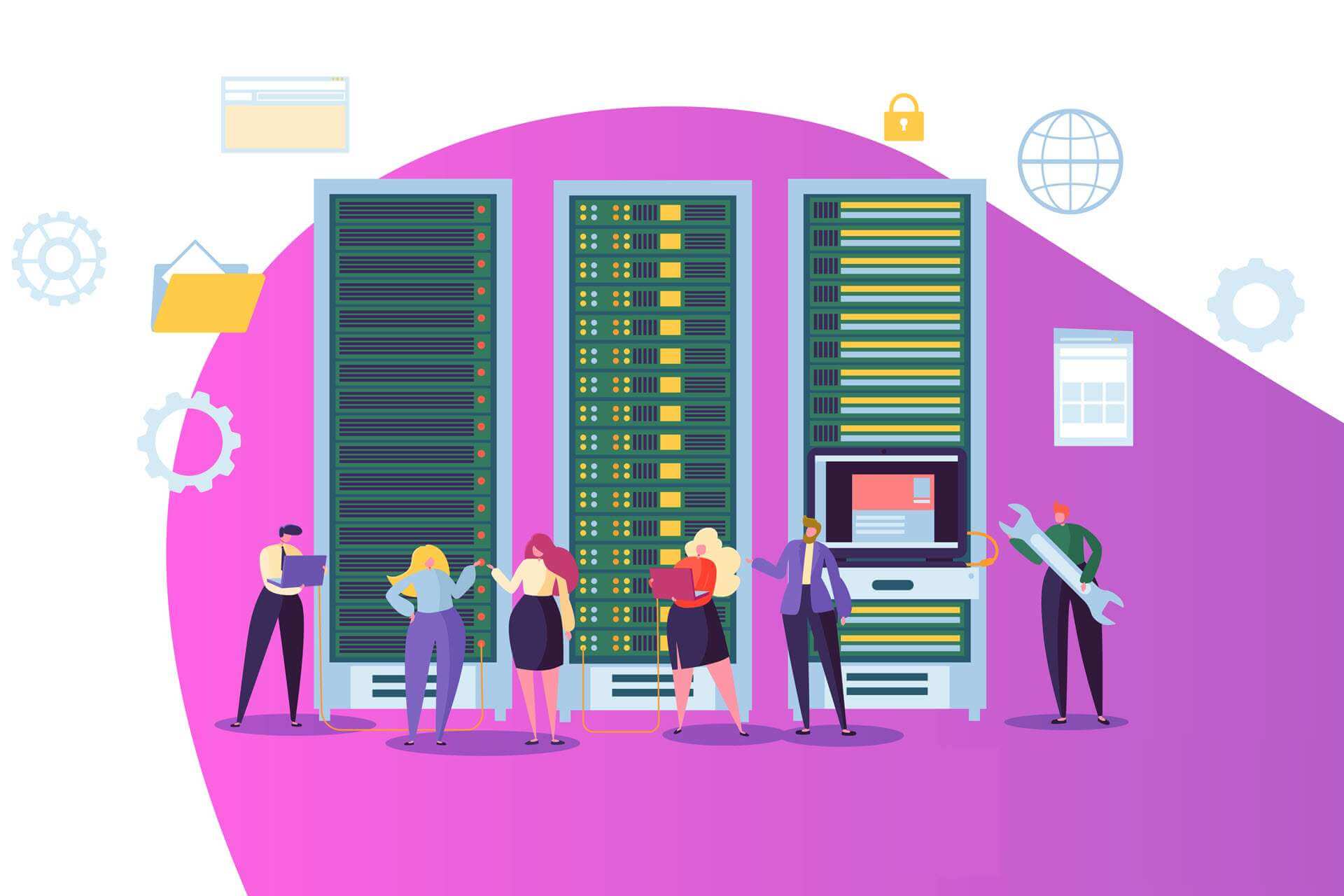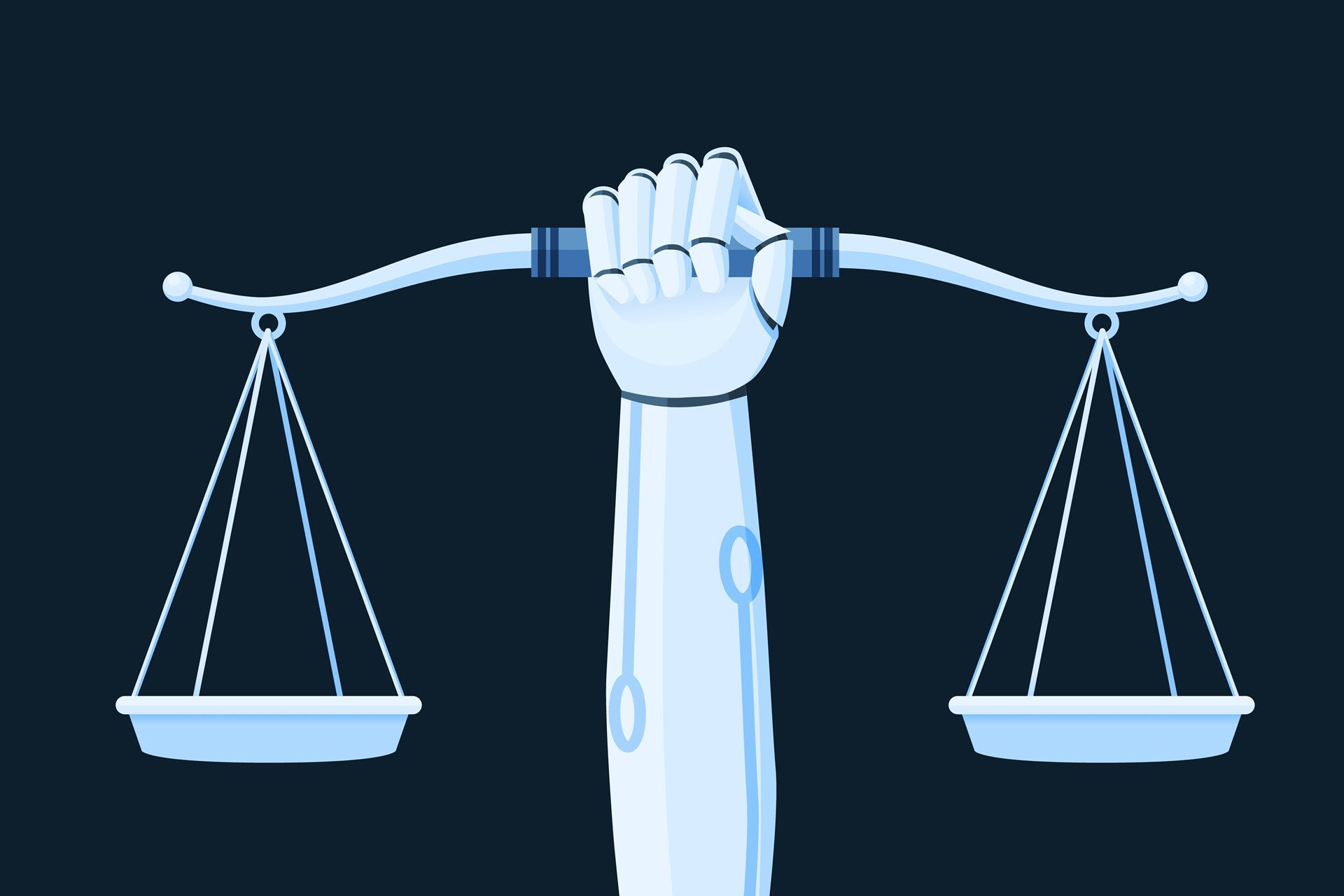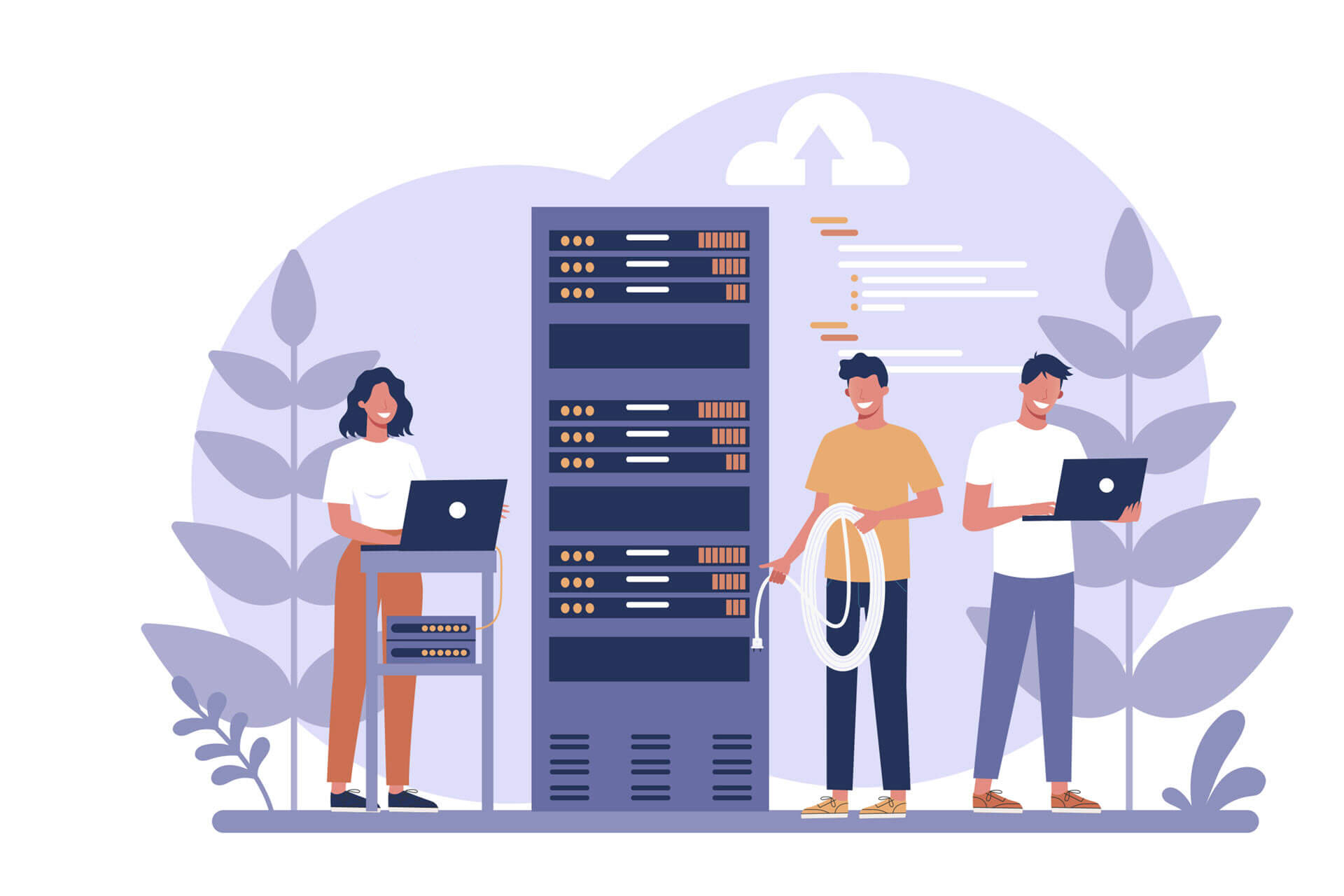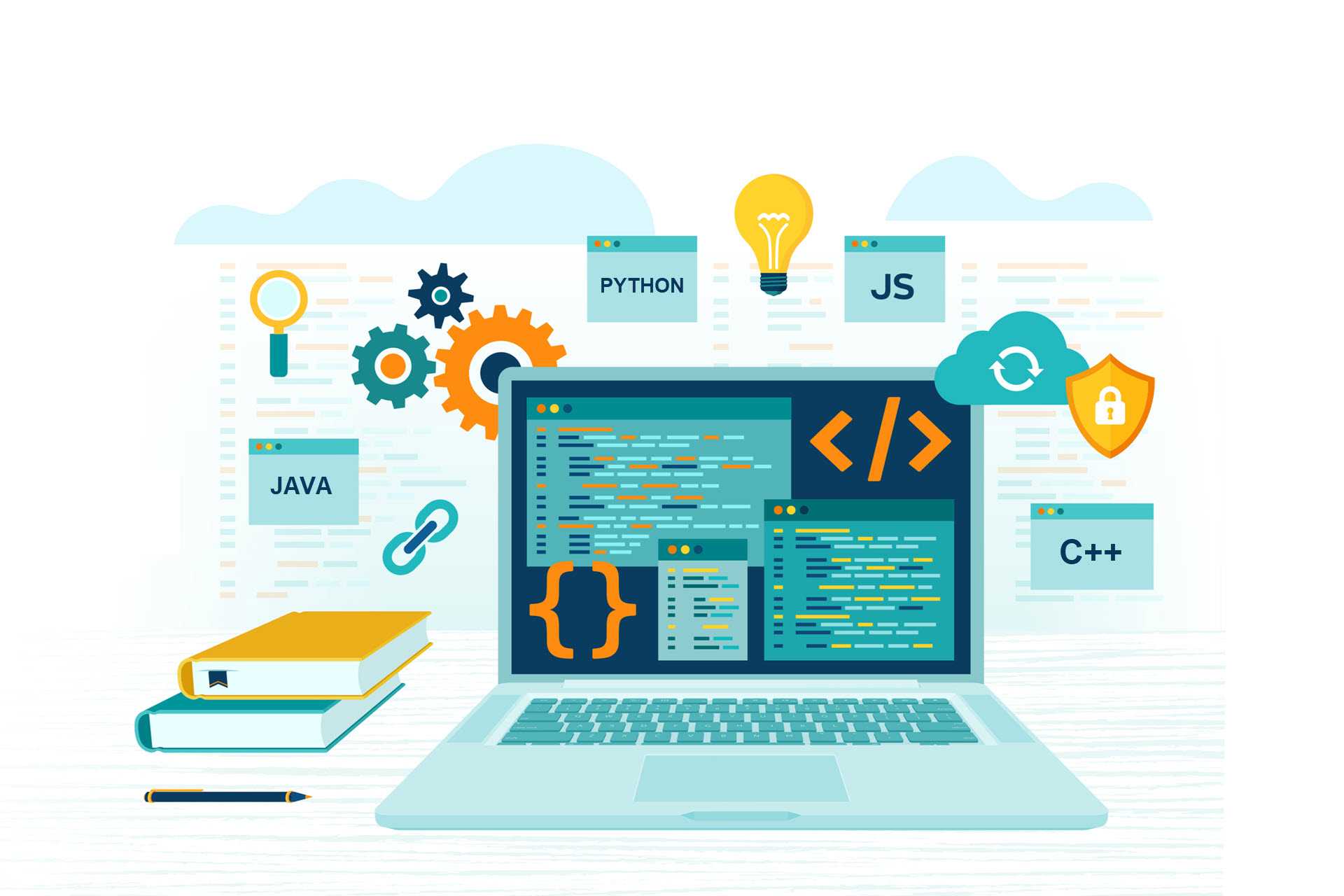Data centers of all tiers are increasingly relying on artificial intelligence (AI) for day-to-day operations. Whether this AI impact on data centers is predominantly positive or negative remains a topic of hot debate.
Those with a positive outlook focus on how AI enables facility managers to automate tasks and improve system oversight. On the other hand, those less optimistic point out how AI technologies increase operational complexity and introduce new security risks. Both viewpoints raise valid arguments.
This article offers an in-depth look at both the positive and negative effects of AI on data centers. Explore how facilities have adapted to recent technological advances and assess for yourself whether AI has been an overall net positive within this industry.
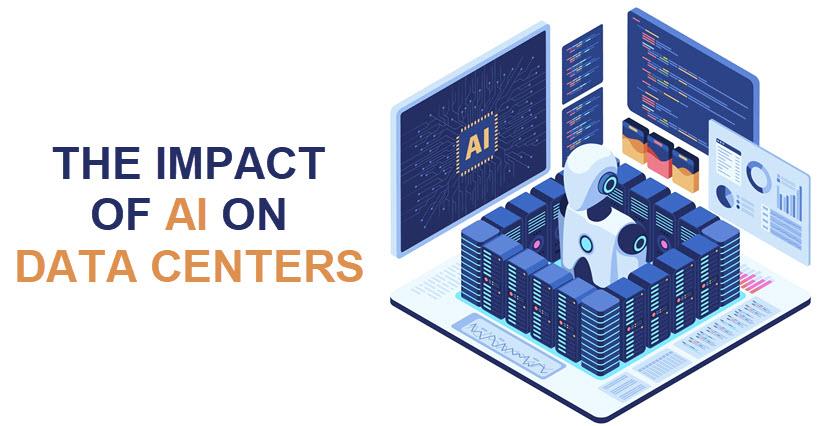
Looking to start using AI at your company? Check out our articles on AI examples and business use cases to get dozens of ideas on how to use AI to boost efficiency and productivity.
How Does AI Impact Data Centers?
AI paved the way for significant improvements in the data center industry, but it also introduced several notable concerns. Let's dive into both the positive and negative effects AI has had on data centers so far.
Positive Impacts of AI on Data Centers
AI brings a range of benefits that enhance the efficiency, security, and overall performance of data centers. Thanks to AI, facility managers get to lower operational overhead, scale more seamlessly, and improve service reliability. The subheadings below offer an in-depth look at the most notable positive effects of AI on data centers.
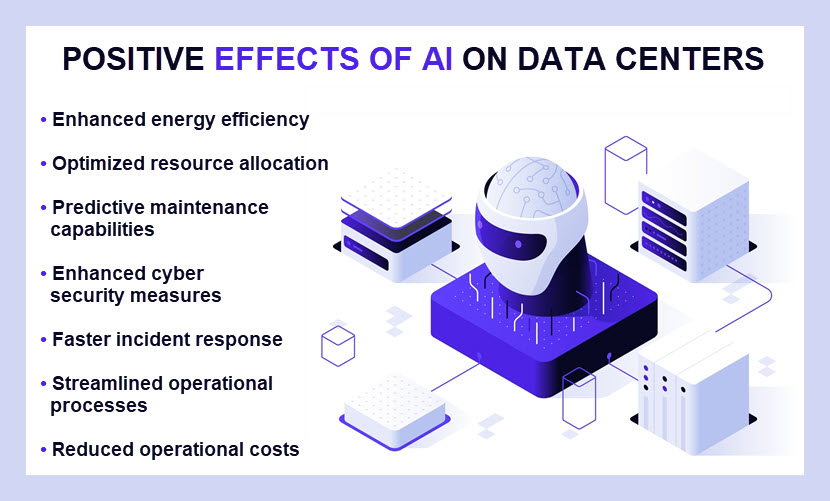
Better Energy Efficiency
All the infrastructure in a data center (servers, storage systems, network switches, routers, load balancers, uninterruptible power supplies (UPS), backup generators, cooling systems, monitoring systems, etc.) requires extreme amounts of power. In recent years, many facility admins have recognized that AI can help them improve energy efficiency by preventing unnecessary power waste.
Here are the most common ways data centers use AI to improve energy efficiency:
- Dynamic adjustments of cooling systems. Many facilities rely on AI to constantly monitor environmental conditions (temperature, humidity, airflow) and adjust cooling systems accordingly. This strategy is far more cost-efficient than running cooling equipment at a fixed capacity.
- Dynamic power distribution. AI can optimize power distribution based on current server demands. For example, AI can route power to servers with the most demanding tasks while reducing the energy supply to underutilized servers or powering down unused hardware.
- No failure-caused energy spikes. Many data centers use machine learning (ML) algorithms to analyze data from cooling and power units to predict potential issues. Anticipating when a component might become less efficient ensures that repairs happen before energy consumption spikes.
- Integration with renewable energy sources. Some data centers use AI to integrate solar and wind power sources. ML regression algorithms predict when renewable energy will be most available, and the facility switches between conventional and renewable energy sources to optimize expenses.
- Energy monitoring and reporting. Many facilities use AI to generate detailed energy usage reports. These insightful reports allow for more precise tracking of energy consumption trends over time, aiding in long-term efficiency planning.
- Battery optimization. If a data center uses batteries for backup or power balancing, AI can optimize the charge/discharge cycles. That way, facilities improve battery longevity and reduce energy waste.
Power and cooling-related problems were the direct cause of almost 71% of all data center outages in the last three years, so it's unsurprising that many facilities are turning to AI in hopes of avoiding costly incidents.
Automated Workload Distribution
In recent years, many data centers have started to use AI to analyze the real-time performance of servers and automatically allocate resources to match demand. Instead of manually adjusting server workloads, data center admins rely on AI algorithms to distribute tasks based on each server's current capacity and performance levels.
This dynamic allocation ensures that no server is overburdened or underutilized, which benefits the data center both during times of low and high demand:
- When demand is low, AI concentrates tasks on fewer servers. That way, other servers can enter energy-saving modes or even power down temporarily to lower running costs.
- During high-demand periods, AI systems automatically activate additional servers to handle the increased load. This process happens in real-time to avoid service disruptions.
AI-powered workload distribution also helps admins prevent server overload by detecting when servers are nearing capacity limits. In that case, AI systems reroute tasks to less-burdened servers to avoid performance drops. This capability is vital during peak traffic times or unexpected surges in demand.
In some facilities, admins use AI to prioritize tasks based on their importance or urgency. For instance, AI can prioritize critical applications over non-essential workloads, which ensures mission-critical operations always have the necessary resources.
Predictive Hardware Maintenance
By analyzing vast amounts of real-time data from sensors and historical performance logs, AI can identify patterns that suggest when equipment is likely to fail. This capability has had a massive impact on data centers as facility managers got a more reliable way to keep the hardware in good health while also:
- Minimizing the chance and length of downtime.
- Reducing repair costs.
- Extending the lifespan of hardware.
- Enhancing service reliability.
- Reducing the need for regular manual inspections.
- Lowering the likelihood of breaching SLA contracts.
Many facilities use AI systems to monitor critical hardware constantly. Sensors collect data on factors like temperature, power consumption, vibration, and performance. AI analyzes this data with anomaly detection models to detect early signs of wear and tear that are not visible to humans or traditional monitoring tools.
For example, if a server's hard drive begins to exhibit minor anomalies in its read/write cycles, AI can flag this issue well before a complete failure occurs. Data center operators have time to replace or repair the drive to prevent unexpected outages or service interruptions.
Many data center managers opt to integrate AI-based systems with maintenance scheduling tools. In those scenarios, AI automatically creates and updates maintenance plans based on the predictive insights gathered from hardware performance data.
Operational Cost Reduction
Many data center owners see AI as an opportunity to lower expenses across various domains. Here's an overview of how AI enables facilities to lower operational costs:
- Automation of routine tasks. AI automates numerous tasks that otherwise require human intervention. Automating tasks like monitoring systems, managing resource allocation, and performing basic troubleshooting reduces the need for manual labor and minimizes the risk of human error.
- Better resource management. By predicting usage patterns and analyzing current demands, AI can optimize the power and processing resources dedicated to various tasks. During low-usage periods, AI can power down unnecessary servers to reduce running costs.
- Reduced repair costs. AI-based predictive maintenance allows data centers to anticipate equipment failures and address issues before they escalate. This foresight reduces the likelihood of costly emergency repairs from impacting the bottom line.
- More cost-effective cooling. AI can optimize the entire cooling system by ensuring cooling levels always match current heat levels. That way, AI reduces energy consumption during off-peak hours, which results in lower utility bills.
- Cost-effective scalability. AI-driven workload distribution and resource management enable facilities to adapt quickly and accurately to changing demands. Data centers optimize their capacity without overprovisioning, which is a common cause of needlessly high IT costs.
- Data-driven decision-making. AI helps identify inefficiencies, optimize workflows, and make informed choices about technology investments. As a result, data centers can cut unnecessary expenses and improve overall profitability.
While effective, utilizing AI systems is not the only way to cut down your IT expenses. Check out our guide to IT cost reduction to see more strategies for lowering operational expenses.
Enhanced Cyber Security
Like in other industries, data centers were quick to recognize how AI helps improve cyber security. Data centers house vast amounts of sensitive data, so AI's ability to detect, analyze, and respond to threats in real-time provides a game-changing layer of protection.
A growing number of facilities are using AI systems to continuously monitor servers and network traffic to identify signs of suspicious behavior. Using machine learning models trained on large data sets, AI can recognize unusual patterns that indicate potential threats like:
- Unauthorized access attempts.
- Malware infections.
- Data breach attempts.
- Phishing attacks.
- Attempts to take servers down with a DoS or DDoS attack.
AI systems analyze user and system behavior to identify anomalies that could signal an attack. For example, AI can detect anomalies like a sudden spike in data transmissions, unusual login locations, or deviations from regular access patterns. Such warning signs often bypass security tools that rely solely on signature-based detection.
Real-time detection allows security teams to mitigate attacks in the early stages of the cyber kill chain. Many data centers also use AI systems to automatically initiate predefined responses to threats, such as:
- Isolating affected servers or network segments (vital in cases of ransomware infections).
- Blocking malicious traffic.
- Revoking user credentials.
- Executing system rollbacks.
- Adjusting firewall rules.
Some data centers use AI to boost their deception-based cybersecurity measures, such as deploying decoy systems (honeypots) to lure attackers. AI-managed honeypots collect valuable intelligence without putting the real infrastructure at risk.
Machine learning regression also helps data centers analyze historical data on previous attacks. Models can forecast the most likely targets and attack vectors, allowing data centers to reduce their attack surface proactively.
Check out our article on data center security for an in-depth look at the most common strategies and challenges of keeping facilities safe from threat actors.
Negative Impacts of AI on Data Centers
While AI offers numerous advantages to data centers, its integration comes with certain challenges that facility managers cannot afford to overlook. Let's dive into the primary concerns associated with deploying AI systems in data centers.
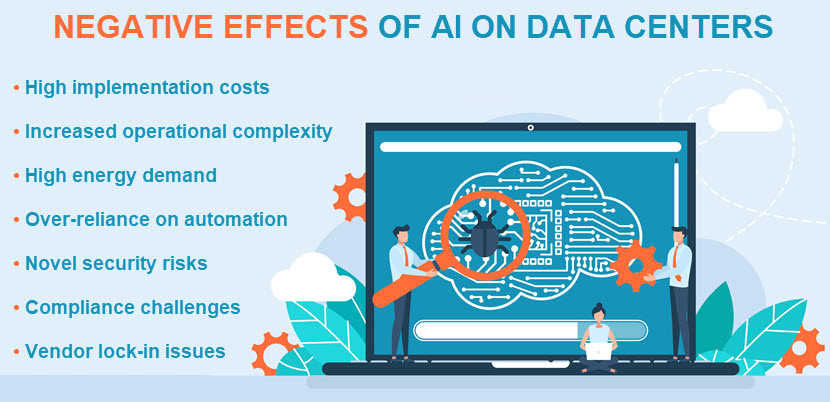
Increased Operational Complexity
While AI streamlines numerous tasks, it also introduces new layers of complexity to both day-to-day operations and long-term management.
AI systems rely on vast amounts of data to function optimally, and managing this data is often challenging. Teams must handle large-scale data processing while ensuring AI can access real-time data. Managing data flows is complex, as even slight errors can lead to issues like:
- Inaccurate predictions or decisions.
- Delays in data processing or transfers.
- Increased resource usage.
- System bottlenecks.
- Inconsistent data quality.
- Data corruption.
Unlike traditional IT systems, AI-driven technologies require continuous fine-tuning and monitoring to remain effective and avoid model drift (i.e., performance degradation due to changes in data or input-output relationships). A team must regularly update, retrain, and adjust the model based on changing workloads, patterns, and available data.
Integrating AI systems with existing IT infrastructure can also be challenging. Ensuring AI communicates effectively with traditional monitoring systems, databases, and workflows often requires advanced customization.
High Costs
Integrating AI technologies into a data center is an expensive endeavour. The high cost of adopting AI poses a considerable barrier for smaller or older facilities lacking the necessary infrastructure to support AI systems.
Advanced systems require powerful AI processors, GPUs, and TPUs, which are far more expensive than traditional server hardware. These specialized components are necessary for intense AI data processing and machine learning tasks.
In addition to buying the necessary hardware, data centers must also account for the costs of:
- Upgrading the networking and storage infrastructure to support the increased data flow.
- Purchasing the software and tools required to develop and run AI models.
- Recruiting skilled data scientists, AI engineers, and specialized IT staff.
- Retraining and upskilling the current staff.
- Integrating AI systems into existing infrastructure and aligning them with the facility's workflows.
The high costs do not end after the initial implementation. Maintaining AI systems requires continuous updates, performance tuning, and monitoring to ensure optimal cost-effectiveness. On top of that, you must account for higher utility bills due to the more power-hungry hardware that requires more intense cooling.
High Energy Demands
The high computational power required to train and run AI models has emerged as a significant negative impact on data centers. This demand raises serious concerns regarding data center sustainability.
Training AI models, especially those based on deep learning, involves processing vast amounts of data through complex algorithms. These computational workloads directly translate to higher energy consumption, leading to soaring electricity bills.
The International Energy Agency (IEA) projected that global data center electricity demand will more than double from 2022 to 2026, with AI playing a major role in that increase. Furthermore, hyperscale data centers expect that they will soon need 40-60kW per rack as they plan to deploy resource-hungry GPUs for AI workloads.
Additionally, as servers work harder to support AI workloads, they generate more heat, which necessitates enhanced cooling solutions. This extra heat leads to additional energy consumption as cooling systems must operate at higher capacities to maintain optimal temperatures.
The increased energy demand for AI processing raises significant environmental concerns. Higher energy consumption produces more greenhouse gas emissions, especially if the data center uses fossil fuels to generate electricity.
New Security Vulnerabilities
As data centers integrate AI into operations, they expose themselves to new vulnerabilities that were not an issue before AI deployment.
One of the primary concerns of using AI at data centers is the risk of data poisoning. This issue arises when attackers manipulate the training data used to develop AI models, which leads to incorrect predictions or decisions. Introducing misleading or harmful data skews a model's decision-making, which can result in outputs that negatively affect data center operations or security.
AI models are also susceptible to inversion, inference, and adversarial attacks:
- Model inversion involves extracting sensitive data from the model by reconstructing original inputs.
- Inference attacks enable threat actors to determine whether specific data points were included in the training data set.
- Adversarial attacks occur when threat actors craft malicious inputs to mislead the AI system and exploit weaknesses in the algorithm.
As an extra concern, advanced AI models are notoriously difficult to interpret, so facility managers often struggle to understand their decisions. This lack of transparency can mask potential vulnerabilities.
Over-Reliance on Automation
While AI-powered automation enhances efficiency, excessive dependence on these systems leads to a decline in critical thinking and technical skills among data center personnel. When a data center automates operational tasks, there is a risk that teams may become less engaged with vital systems and processes.
Over time, employees may lose essential knowledge critical for troubleshooting, problem-solving, and infrastructure maintenance. A degradation of human skills can be devastating if AI systems go down or during unforeseen incidents like:
- Floods or fires within the data center.
- Major power outages.
- Unexpected data integrity issues.
- Successful cyber attacks.
- Changes in legal or regulatory requirements.
As an extra concern, over-reliance on automation often fosters a culture of complacency. Employees might become overly reliant on automated systems, which can lead to a lack of vigilance and attention to detail. This complacency increases the risk of costly oversights and errors.
Gradual degradation of human skills due to over-reliance on AI is one of the most concerning risks of using artificial intelligence.
How Will AI Affect Data Centers in the Future?
While the current impact of AI on data centers is already substantial, AI technologies are expected to bring about even more changes in the coming years.
Data center managers will continue to look for ways to maximize the current advantages offered by AI. Expect facility admins to experiment with better ways they can use AI to:
- Automate repetitive tasks.
- Lower operational costs.
- Improve capacity planning.
- Enhance disaster recovery (DR) processes.
- Optimize energy consumption strategies.
- Improve security protocols, detection strategies, and threat modeling.
- Streamline compliance monitoring and reporting.
- Improve resource scaling based on real-time demands.
In the long run, AI could lead to the emergence of semi or even fully autonomous data centers capable of self-managing energy usage, optimizing server performance, and predicting hardware failures. In these facilities, the role of human operators will shift from day-to-day tasks to high-level oversight.
There is also a strong possibility that we will see the growth of a niche market for data centers optimized for AI workloads. These facilities will feature tailored architectures and resources designed specifically to maximize AI performance.
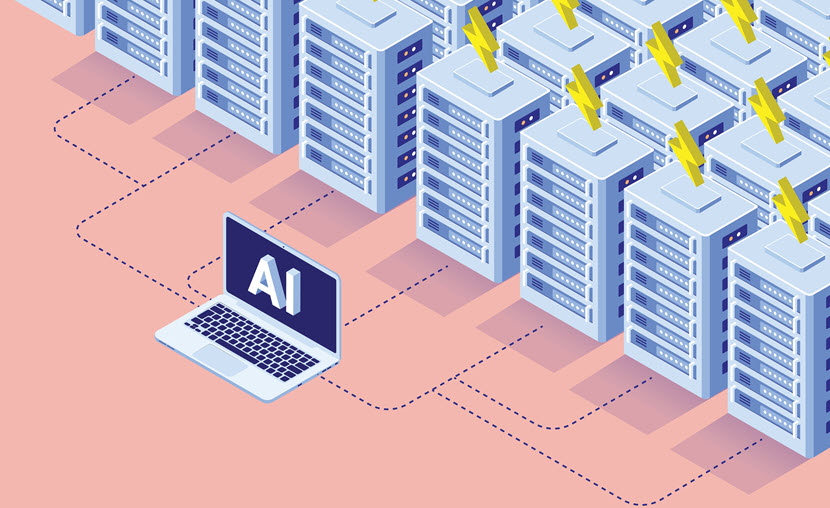
Will AI Require More Data Centers?
The global data center storage capacity is expected to grow from 10.1 zettabytes (a trillion gigabytes) in 2023 to 21.0 ZB in 2027 (a five-year compound annual growth rate of 18.5%). AI will be the main driving factor behind this substantial growth.
As organizations across all industries adopt AI technologies, the demand for processing and storing this data will require the construction of new data centers. Meanwhile, most existing data centers that wish to remain competitive will have to go through some form of expansion to make room for the new AI equipment. In some cases, these facilities will have to migrate to a more suitable data center site.
You should also expect to see an increase in the number of AI-powered edge data centers. Small edge data centers process data locally to reduce latency and bandwidth consumption. Edge facilities complement larger data centers by enabling AI systems to process some data at the edge before moving it to the central facility.
Discover AI data centers and their advantages over traditional facilities.
Data Center Owners Must Embrace Both Pros and Cons of AI
Despite a few considerable drawbacks, data center owners will only broaden their use of AI in the coming years. As the technology becomes more prevalent, it will be essential that facility managers fully acknowledge both the positive and negative impacts of AI integration. Balancing these pros and cons is the only way AI in data centers can become profitable and sustainable in the long run.
